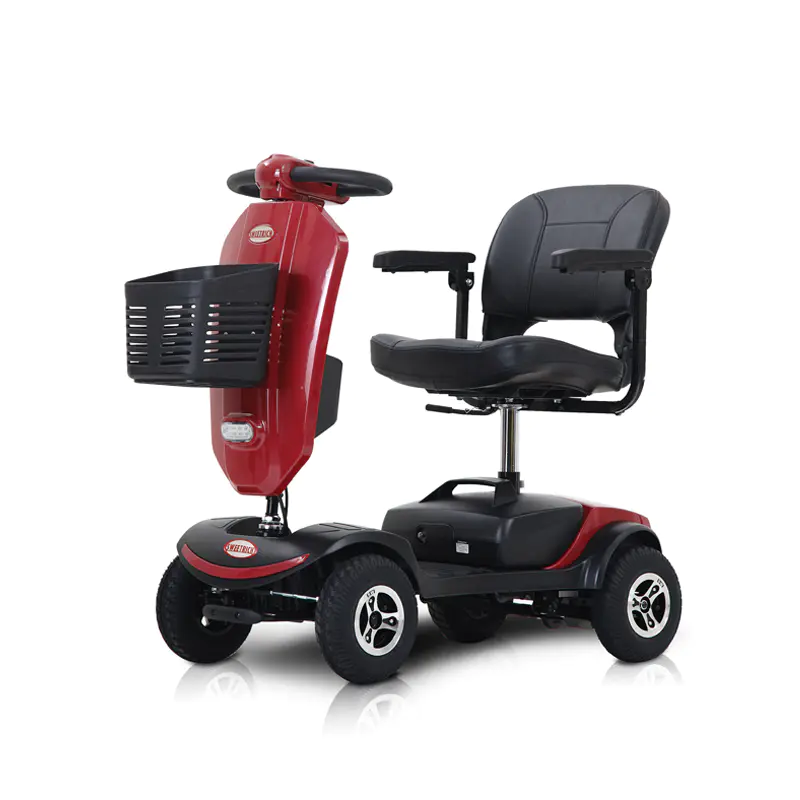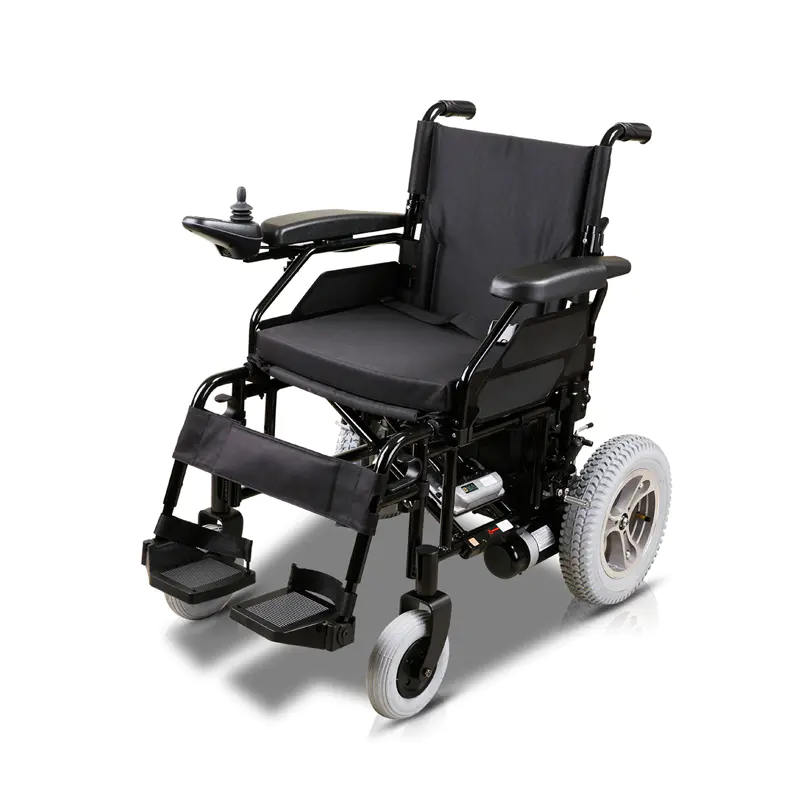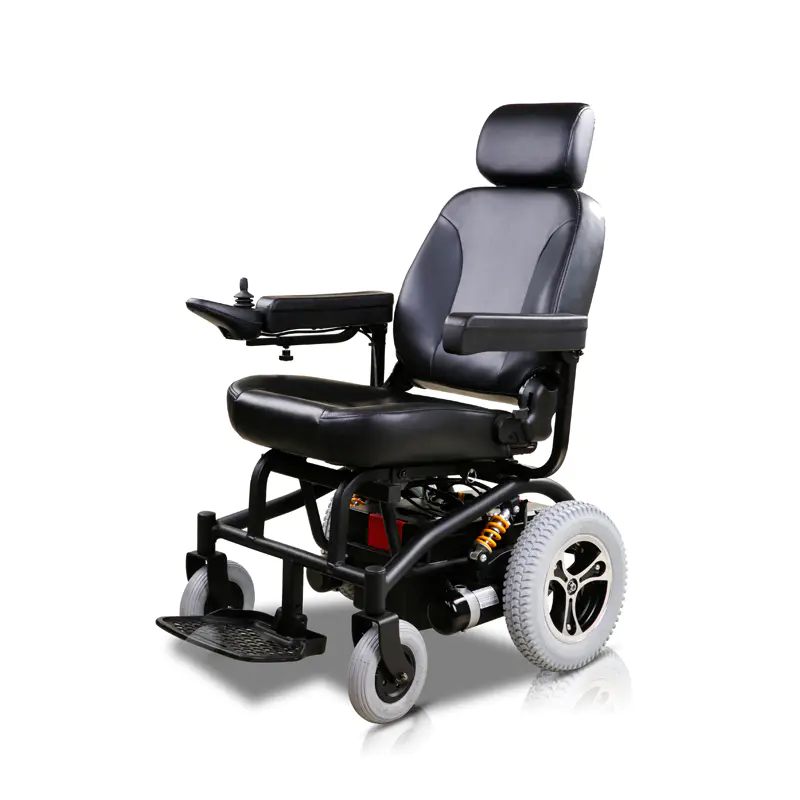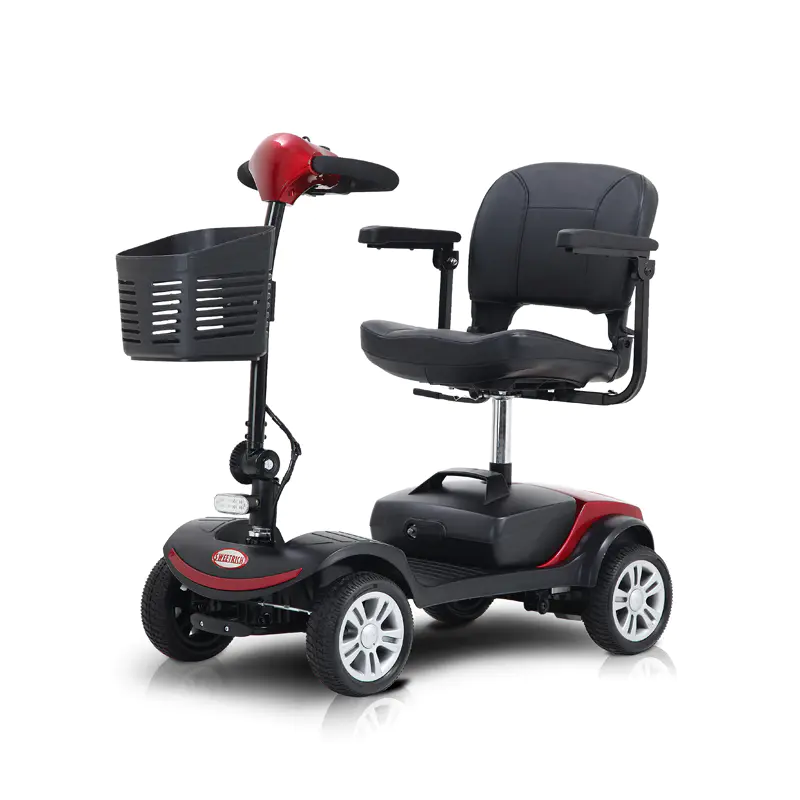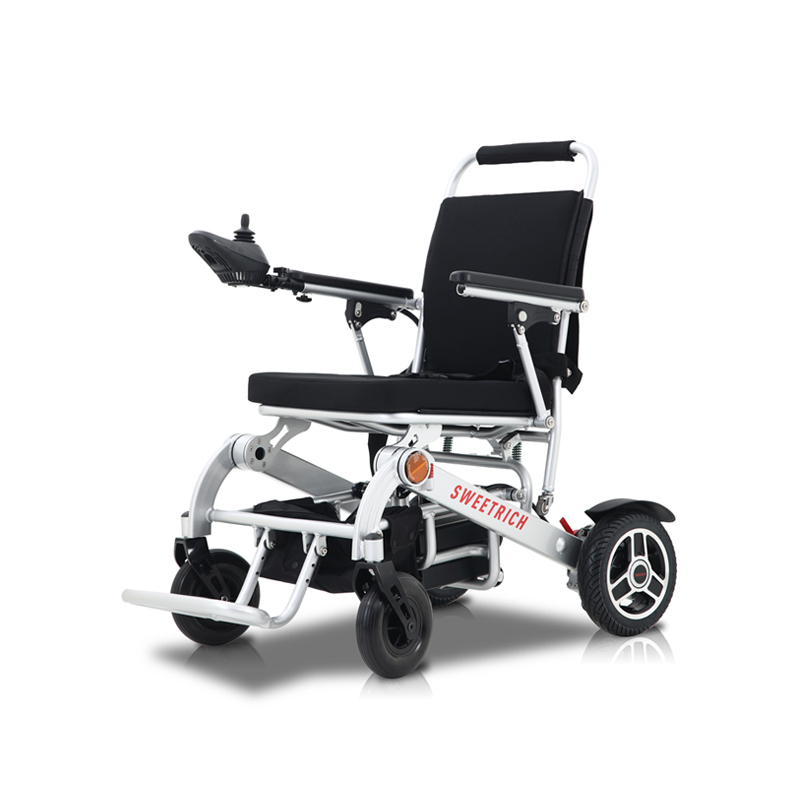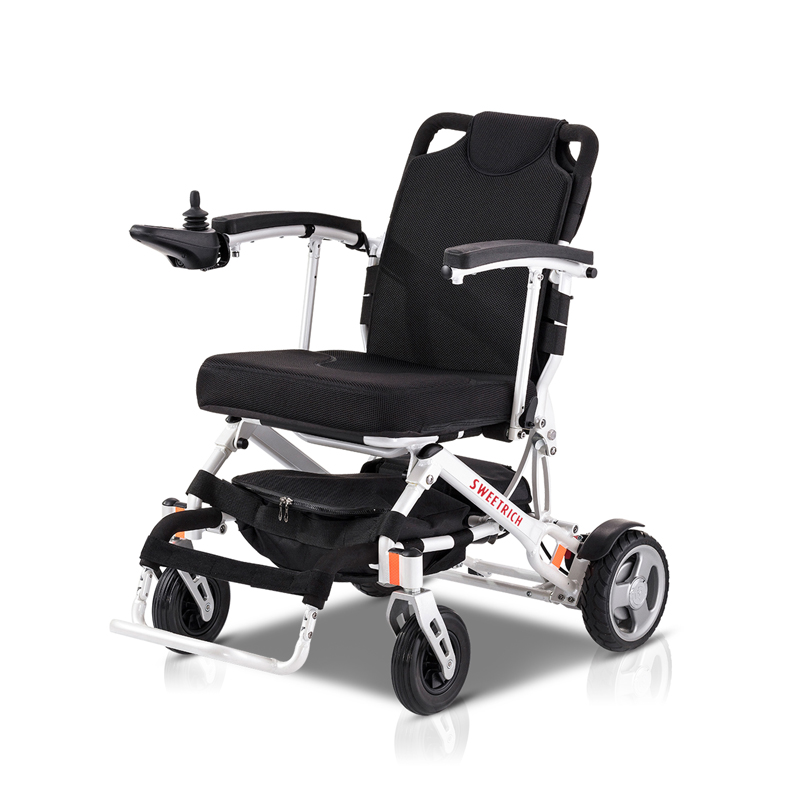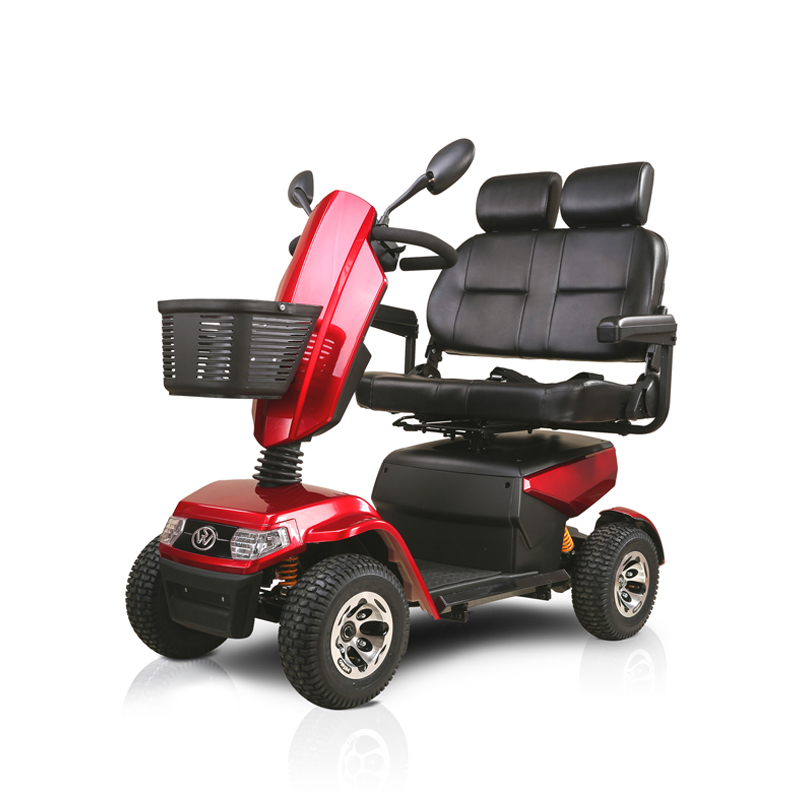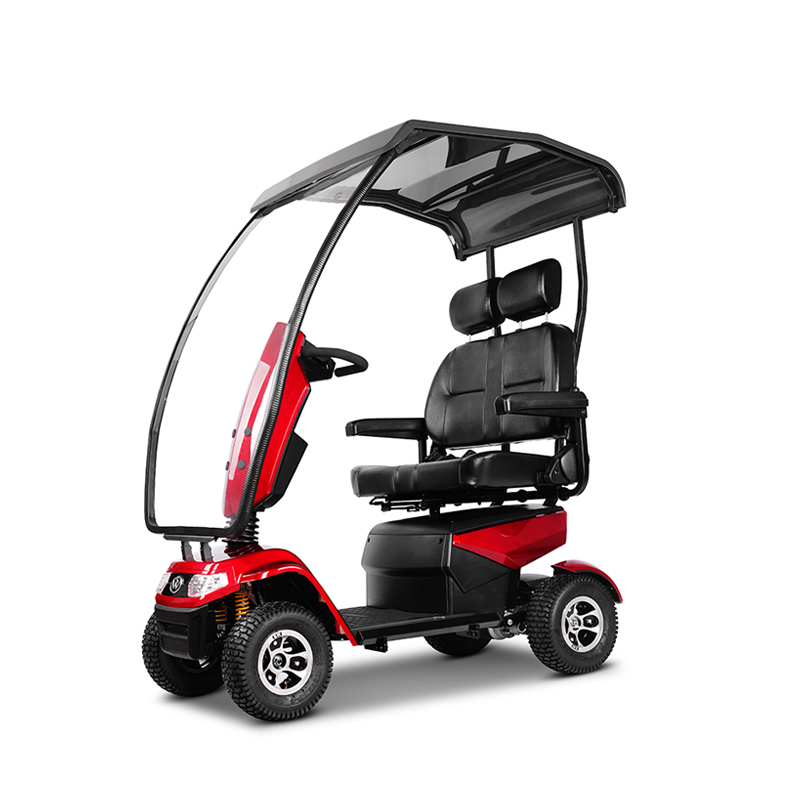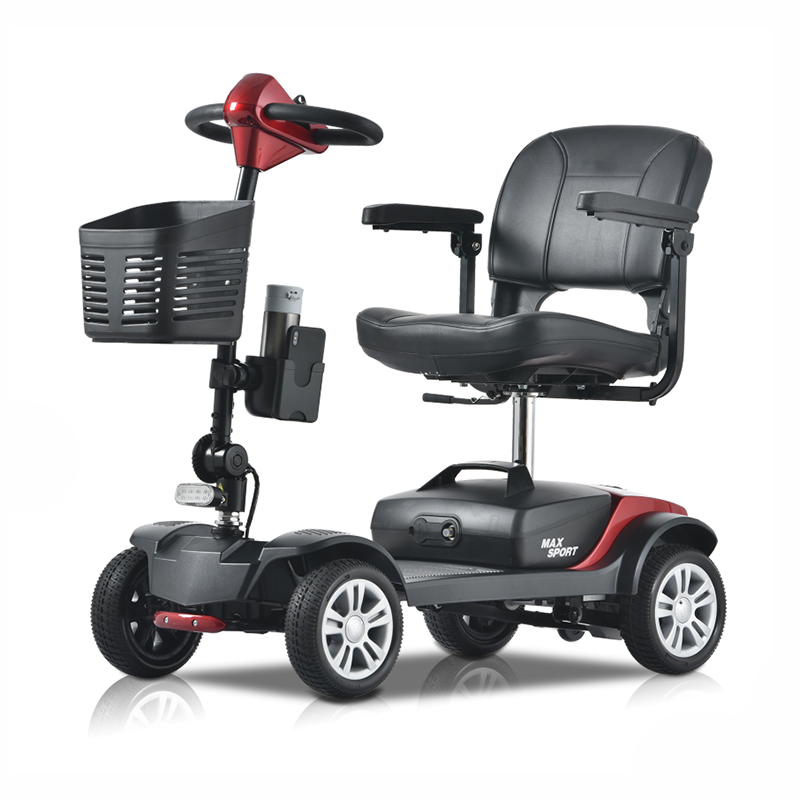Comfortable seat design: a travel experience that allows you to sit for a long time without getting tired
For the elderly and people with limited mobility, long-term riding in public transportation can easily cause fatigue, and comfortable seat design is the key to improving the travel experience. The seat of Mobility Scooter adopts an ergonomic design concept, which fully considers the physiological curve of the human body. The backrest of the seat has a perfect tilt angle, which can fit the user's back, provide strong support for the waist and back, and effectively reduce the soreness caused by sitting for a long time; the seat cushion is made of soft and elastic material, which not only ensures the comfort of riding, but also disperses the body pressure. Even if you sit for a long time, you will not feel numbness in your buttocks.
In addition, the height of the seat is also precisely designed to facilitate users to get on and off the vehicle easily. The seats of some mobility scooters also have an adjustment function, which can be adjusted according to the user's height and actual needs to further improve the adaptability of riding. At the same time, the seat surface is made of breathable materials, which can effectively avoid the stuffiness caused by long-term riding, and keep the body dry and comfortable even when traveling in hot weather.
Convenient control system: a simple and easy way to travel
Taking into account the physical condition and operating ability of the elderly and people with limited mobility, the design of the control system of the scooter strives to be simple and convenient. The joystick is the core control component of the scooter. Its position design conforms to the natural operating habits of the human body. The user only needs to gently hold the joystick and simply push it forward, backward, left and right to easily control the vehicle's forward, backward, steering and other actions. The joystick has moderate strength, which is neither too strenuous nor too sensitive to cause loss of control. Even users with weak hand strength can easily control it.
In addition to basic driving control, the control system of the scooter also integrates some practical functions. For example, the one-button start and stop button simplifies the vehicle's start and shut down process; the light control button, horn button, etc. are also set in an easy-to-reach position, which is convenient for users to operate as needed during driving. This simple and clear control design does not require a complicated learning process. Users only need to be familiar with it a little to master the operation of the scooter and achieve independent travel.
Stable chassis structure: a solid foundation for dealing with complex road conditions
The complexity of road conditions is a major challenge faced by the elderly and people with limited mobility when traveling, and a stable chassis structure is an important foundation for scooters to ensure driving safety and stability. The chassis of the scooter is made of solid materials and has a reasonable structural design. It has high strength and rigidity and can withstand various stresses during vehicle driving. The ground clearance of the chassis has been scientifically designed to ensure the stability of the vehicle when driving on a flat road, and to enable it to have a certain degree of passability, so that it can easily deal with some small obstacles and uneven roads.
At the same time, the chassis layout of the scooter fully considers the distribution of the center of gravity of the vehicle, and reasonably places important components such as batteries and motors to keep the center of gravity of the vehicle at a low and stable position, effectively reducing the risk of vehicle rollover. In addition, some mobility scooters are also equipped with suspension systems that can effectively filter the bumps on the road, further improving the stability and comfort of the vehicle under complex road conditions, so that users can feel more at ease during travel.
High-performance braking system: safety protection at critical moments
The brake system is a key component for mobility scooters to ensure safe driving, which is especially important for the elderly and people with limited mobility. The high-performance braking system equipped with modern mobility scooters can respond quickly in emergency situations and achieve reliable braking. The brake system uses advanced braking technology and high-quality braking materials, with strong and stable braking force, which can ensure that the vehicle can stop within a short distance whether on dry or slippery roads.
The design of the brake device also fully considers the user's operational convenience and comfort. Some mobility scooters use a combination of handbrakes and footbrakes, and users can choose the appropriate braking method according to their habits and actual conditions. The position of the handbrake is convenient for hand operation and has moderate force, so even users with weak hand strength can easily pull it; the footbrake is designed in a position that is easy to step on, and the stepping stroke and force are optimized to ensure that users can accurately and quickly implement braking operations, providing reliable protection for travel safety.
Bright lighting configuration: safety guarantee for night travel
When traveling at night, insufficient light will bring many safety hazards to the elderly and people with limited mobility, while the bright lighting configuration of mobility scooters provides a strong safety guarantee for them to travel at night. Mobility scooters are usually equipped with a variety of lighting devices such as headlights, taillights, and turn signals. The headlights use high-brightness lighting sources with a wide range of illumination and high brightness, which can clearly illuminate the road ahead, allowing users to promptly detect obstacles and road conditions ahead when driving at night; the taillights have a striking warning function, allowing vehicles and pedestrians behind to clearly see the position and driving status of the mobility scooter, avoiding rear-end collisions; the turn signal will emit a flashing light signal when the vehicle turns, prompting surrounding vehicles and pedestrians to pay attention to the change in the driving direction of the mobility scooter, thereby improving the safety of travel.
In addition, some mobility scooters are also equipped with auxiliary lights, such as side lights and warning lights, to further enhance the visibility of the vehicle when driving at night. These lighting devices not only have good lighting and warning functions, but also adopt energy-saving design. While ensuring brightness, they will not consume too much vehicle power, ensuring that the vehicle has sufficient endurance when driving at night.
Anti-rollover design: an important line of defense to avoid accidents
Due to the relatively weak body balance ability of the elderly and people with limited mobility, once the mobility scooter rolls over during driving, it is easy to cause serious injuries. Therefore, anti-rollover design is an important part of the safety guarantee of mobility scooters. Mobility scooters achieve anti-rollover function in many ways. In terms of chassis design, a wide wheelbase and low center of gravity structural layout are adopted to increase the stability of the vehicle and reduce the risk of rollover; in terms of wheel design, tires with good grip are equipped to ensure that the vehicle can firmly grasp the ground during driving, even when turning or passing uneven roads, it can remain stable.
At the same time, some mobility scooters are also equipped with anti-rollover sensors and automatic balance control systems. When the vehicle tends to roll over, the sensor can detect the change in the body posture in time and transmit the signal to the control system. The control system will respond quickly and automatically correct the vehicle's posture by adjusting the output power of the motor and the speed of the wheel to avoid rollover accidents. This anti-rollover design provides a solid line of defense for the elderly and people with limited mobility.
-
 +86-(0)512-82283871
+86-(0)512-82283871 - Contact us
- Buy online
- Download Catalog
Excellent manufacturer of mobility products
- Home
- Mobility Scooters
- Electric Wheelchairs
- Travel Smart
- Resources
- About Us

